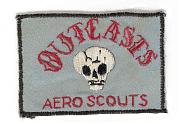Main advantage of GPMGs is RANGE RANGE RANGE. Otherwise a SAW is just as capable. Any support weapon that can reach the range of a GPMG can supplant them in support. I like the 25mm payload rifle myself, but other options abound. Mortars are a possibility if they could be equiped with PGMs.
As far as big or small sections, that concept is based upon sections being the smallest unit that can act INDEPENDENTLY. Truth is, they can not, not for the most part. So big sections are still to small to effectivly use fire and movement techniques, becouse they can not sustain casulties or meet the variety of threats on the modern battlefield. A platoon is really the smallest unit you want patroling on it's own. See Mr. Owens article on Patrol-based Infantry for an example.















Bookmarks